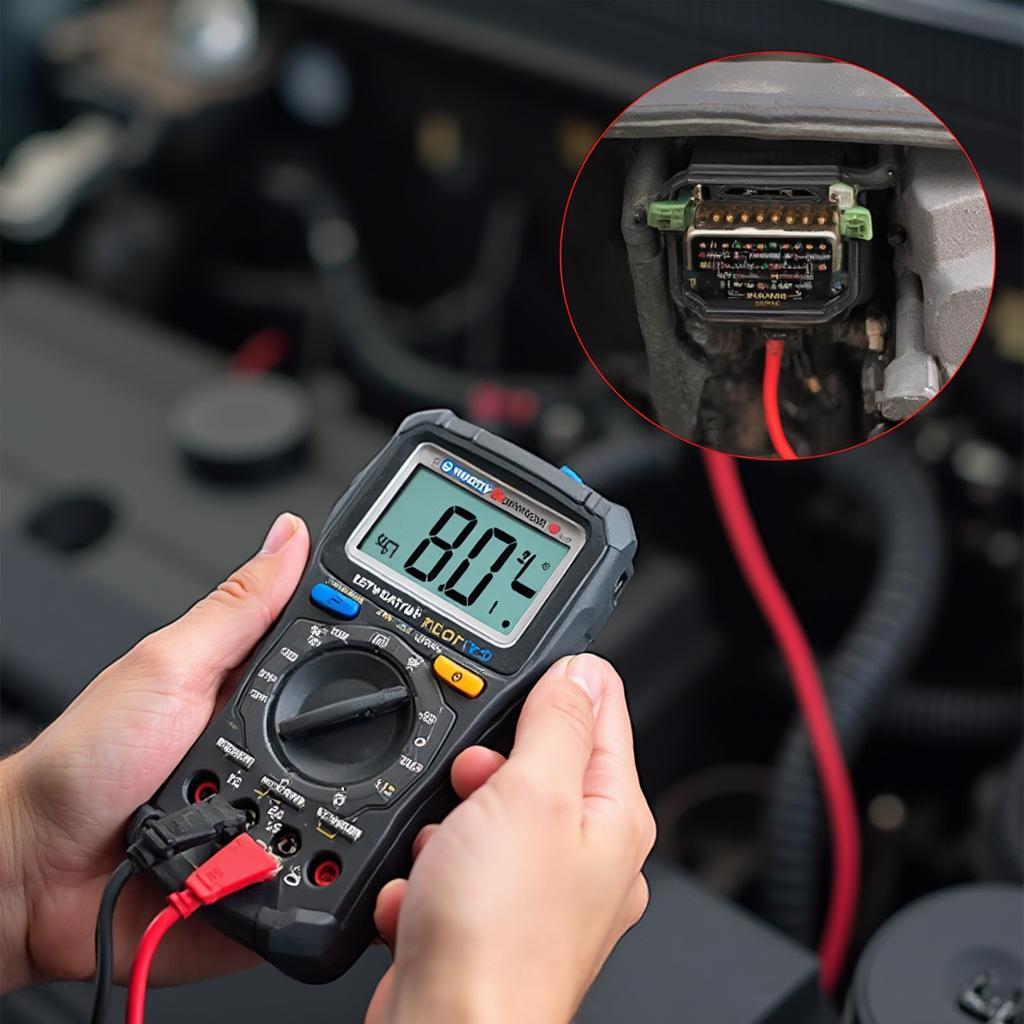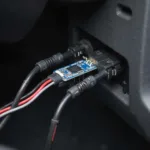A dead OBD2 port can be a frustrating roadblock when you’re trying to diagnose car problems. This article will cover everything you need to know about dealing with a dead OBD2 port, from diagnosing the issue to finding solutions and preventative measures.
 Diagnosing a Dead OBD2 Port
Diagnosing a Dead OBD2 Port
Understanding the OBD2 Port
The OBD2 port, officially known as the On-Board Diagnostics port, is the gateway to your car’s internal systems. It allows you to connect a diagnostic scanner to retrieve trouble codes, monitor sensor data, and perform various tests. A functioning OBD2 port is essential for troubleshooting car problems and ensuring efficient repairs. Having a dead OBD2 port can make it difficult to identify the root cause of your car’s issues.
Why is My OBD2 Port Not Working?
Several reasons can contribute to a dead OBD2 port. These include blown fuses, wiring problems, a faulty OBD2 connector, or even issues with the car’s computer system. Sometimes, the problem isn’t the port itself but a compatibility issue with the OBD2 scanner. toyota obd2 port dead provides specific information for Toyota owners.
Diagnosing a Dead OBD2 Port
Before panicking, start with simple checks. how to tell obd2 port is dead offers a detailed guide on this. First, inspect the OBD2 port for any visible damage like bent pins or debris. Next, check the vehicle’s fuses. The OBD2 port is usually connected to a specific fuse, and a blown fuse is a common culprit. If the fuse is good, you can use a multimeter to test for power and ground at the OBD2 port pins. This helps determine if the port is receiving power. Knowing on a live obd2 what should the spark be at is helpful if you are comfortable working with electrical components. If you’re unsure, consulting a professional mechanic is recommended.
Common Issues with Specific Car Models
Some car models are known to have specific issues related to their OBD2 ports. For example, certain Volkswagen models, like the 2004 vw jetta obd2 port is dead, have reported problems with the wiring harness connected to the port. Knowing the common issues associated with your car model can help narrow down the troubleshooting process.
Solutions for a Dead OBD2 Port
Once you’ve identified the cause of the dead OBD2 port, you can proceed with the appropriate solution. Replacing a blown fuse is a simple fix. If the problem lies with the wiring, you might need to repair or replace the damaged wires. In some cases, the OBD2 connector itself might need replacement. For more complex issues involving the car’s computer system, professional help is recommended.
What if the Scanner is the Problem?
Sometimes the issue isn’t a dead OBD2 port, but rather the scanner itself. Trying a different scanner can help determine if this is the case. Consider an obd2 scanner rental autozone as a cost-effective way to test this without committing to a purchase.
Preventing Future OBD2 Port Problems
Protecting your OBD2 port from damage can prevent future problems. Avoid inserting anything other than a compatible OBD2 scanner into the port. Keep the port clean and free from debris. If you frequently use the port, consider using a protective cap.
Conclusion
A dead OBD2 port can be inconvenient, but with the right knowledge and tools, you can effectively diagnose and resolve the issue. Remember to always start with simple checks and escalate to more complex troubleshooting steps if necessary. By understanding the common causes and solutions, you can keep your OBD2 port functioning properly and maintain access to vital vehicle diagnostic information.
FAQs
- Can a dead battery cause a dead OBD2 port? A completely dead battery can sometimes prevent the OBD2 port from functioning correctly.
- How much does it cost to fix a dead OBD2 port? The cost varies depending on the cause and solution. A simple fuse replacement might cost a few dollars, while more complex repairs involving wiring or the car’s computer system could cost significantly more.
- Can I drive my car with a dead OBD2 port? Yes, you can usually drive your car with a dead OBD2 port. However, you won’t be able to use a diagnostic scanner to retrieve trouble codes.
- Where is the OBD2 port located? The OBD2 port is typically located under the dashboard on the driver’s side, near the steering wheel.
- How can I tell if my OBD2 scanner is compatible with my car? Consult your car’s owner’s manual or check the scanner’s documentation for compatibility information.
Need help with your car diagnostics? Contact us via WhatsApp: +1(641)206-8880, Email: [email protected] or visit us at 789 Elm Street, San Francisco, CA 94102, USA. We offer 24/7 customer support.
